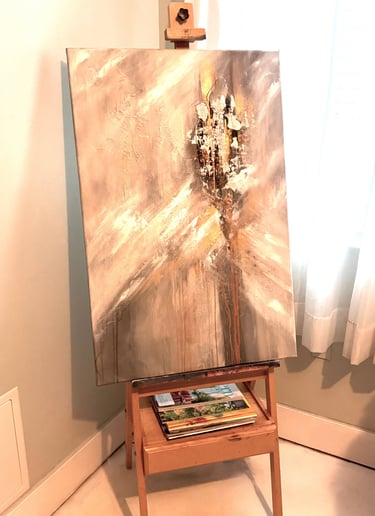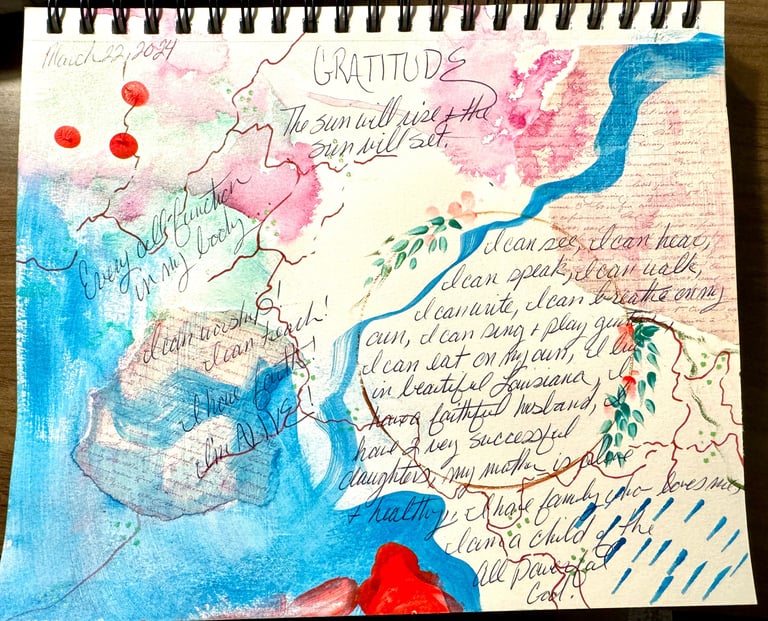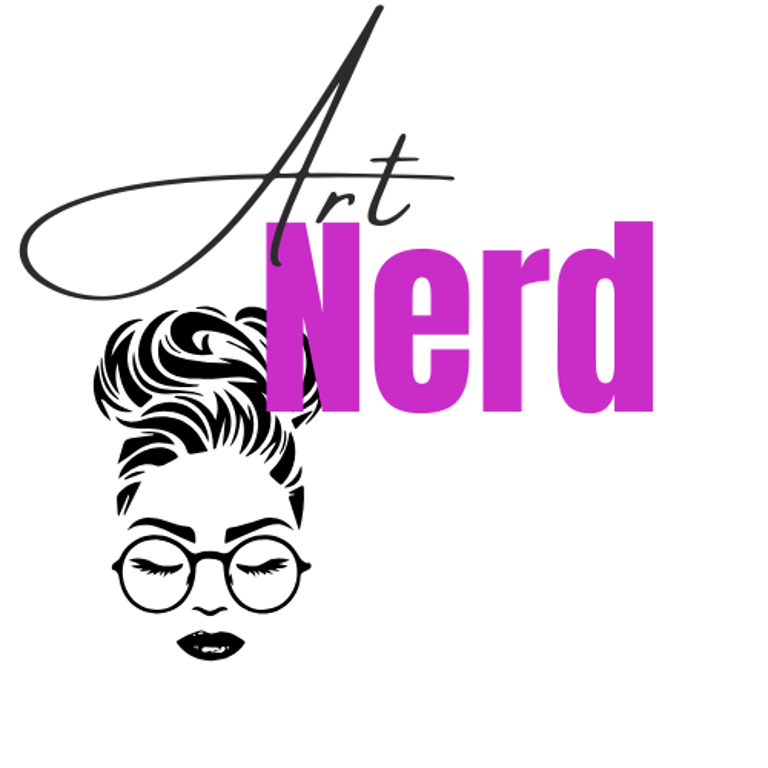Top Must-Have Supplies for Beginner Artist
As the holiday season approaches, the emphasis on finding the ideal gifts and spending gift cards becomes increasingly pronounced. Among the plethora of options available, supporting budding artists with thoughtful supplies stands out as a unique and meaningful choice. The journey of creativity often requires the right tools, especially for young and beginner artists who are still developing their skills and confidence. Providing them with high-quality art supplies can significantly enhance their creative experiences.


The Gift of Creativity
Art is not merely a pastime for many; it is a vital form of expression. Every stroke of a brush, every shade of color, and every line drawn contributes to an artist's growing confidence and skill level. Understanding the importance of supplying new and budding talent with essential materials cannot be overstated. Thoughtful gifts aimed at nurturing creativity will not only assist young artists in improving their skills but also encourage them to exercise their imaginations and express themselves without fear.
This holiday season, consider how educational gifts can inspire a lifelong passion for art. By presenting aspiring artists with curated supplies, whether it be sketchbooks, paints, brushes, or instructional books, you are equipping them with the important tools they need to flourish academically. Yes, that's what I said, academically. Research shows that art influences cognitive development. Furthermore, by choosing such supplies, you send a clear message that you value their interests and believe in their potential.
Essential Supplies
Beginning the journey into the world of art requires an array of essential supplies that will facilitate experimentation, creativity, and skill development. The right tools are indispensable, ensuring a smooth transition from inspiration to execution. Below are six key supplies that every beginner artist needs.
Next, a quality selection of paints is crucial. Beginners can choose from various mediums, including acrylics, oils, or watercolors, each offering unique textures and techniques. Acrylic paints, for instance, are water soluble and dry quickly, making them suitable for novice artists experimenting with layering and mixing colors. The most expensive paints are not necessary at this point. However, you do get what you pay for.
A versatile set of brushes is also necessary. Different shapes and sizes result in varied brush strokes, enabling artists to explore various techniques. Investing in a few essential brushes will equip beginners with the tools to experiment with detail and texture in their work. Over time that will discover they have a favorite type of brush, but for now, experimentation is key.
Canvases also play a pivotal role, as they provide the surfaces for expression. For beginners, pre-stretched canvases are often recommended due to their convenience and readiness for painting. An alternative to canvases can be hardwood sheets or cradled wood surfaces. I've even used old cabinet doors to paint on.
A sketchbook is nonnegotiable. This allows artists to practice drawing, brainstorm ideas, and document their artistic growth. Regular sketching promotes skill enhancement, serving as a low pressure environment to experiment without the fear of creating a final piece.
Finally, they need a palette for mixing colors. This tool helps in achieving the desired hues and tones, making it easier for artists to fine tune their color selection. A variety of palettes, whether disposable or reusable, can cater to different preferences and styles.
Choosing the Right Easel
First and foremost, an easel is fundamental. It provides a stable platform to hold canvases at the preferred height and angle, allowing for comfort and ease during painting sessions. Whether adjustable or fixed, an easel lays the groundwork for an organized workspace, which is vital for focused creativity. I recommend a lightweight, aluminum, adjustable, and portable tripod easel. This one is adjustable from 17 inches to 66 inches in height so that it can be used as a floor easel or tabletop easel, it folds to just 21" for easy storage and portability. The clip at the top grabs the canvas for a more secure hold. The maximum weight is 10 pounds. Perfect for beginner artists.
Tabletop easels are a practical choice for those with limited space. These compact easels can easily be positioned on a desk or table, making them perfect for young artists working in their bedrooms or shared spaces. Their lightweight nature allows for effortless transportation, enabling artists to create wherever inspiration strikes. Additionally, tabletop easels are often more affordable, making them an excellent option for beginners operating on a budget.
Image from Hostinger free stock
Standing easels, in contrast, provide a more traditional setup, typically featuring a larger surface area that can accommodate various canvas sizes. These easels are an excellent option for young artists who may want to explore larger works as their skills develop. Some standing models can be easily adjusted for different heights, allowing for comfortable use while sitting or standing. However, their size may limit portability, and they usually require more space to set up. Check out this Beechwood H-Frame Adjustable Studio Easel. I've been having this one for years now and it has served its purpose well. There is a convenient drawer at the bottom where I was able to store all of my paints. The shelf created by the drawer can be used to place your water and cloths.


Paints: Types to Explore
For aspiring artists, selecting the right paint is so important to developing their skills in mixing colors. Three popular types of paints that every beginner should consider are acrylics, watercolors, and gouache. Each of these paint types has unique characteristics that make them suitable for different artistic approaches.
Acrylic paints are well-known for their versatility and fast-drying properties. They are water soluble, yet become water-resistant when dry, allowing faster layering. Artists can easily create a range of textures, from subtle washes to thick impasto applications with acrylic paint simply by adding water. Additionally, acrylic paint sets are widely available, often packaged with a supportive array of colors, making them ideal for holiday gifting.
Watercolors, characterized by their transparency and delicate nature, offer another path for beginners. These paints are mixed with water, allowing for a wide spectrum of effects, such as soft washes and vibrant color blends. Suitable for both detailed work and loose, intuitive compositions, watercolors can, however, present challenges in terms of controlling the amount of water used. Beginner-friendly watercolor sets usually include basic colors and high-quality paper, making them a thoughtful Christmas gift for your aspiring artists.
Gouache paints bridge the gap between acrylics and watercolors. They are also water-based but offer a more opaque finish, allowing artists to achieve vibrant colors and smooth coverage. Gouache is particularly forgiving for beginners, and allows for reworking and layering without disturbing the underneath layers. Gift options could include starter gouache sets that cater to new artists' needs.
Brushes: Tools for Expression
Brushes are fundamental tools for any artist, especially beginners who are beginning to explore their creative potential. A well-chosen set of brushes can significantly impact the quality of a painting, as different shapes and sizes cater to various techniques and expressions. For novice artists, it is essential to understand the types of brushes available and how they can enhance your artistic journey.
Among the essential brush shapes are round brushes, ideal for detail work, line drawing, and soft washes. Their tapered bristles allow for precision, making them indispensable for any beginner's toolkit. Flat brushes have a rectangular shape and straight edges, are perfect for bold strokes, covering larger areas, and creating sharp lines. Fans, filberts, and detail brushes offer additional options for texture and intricate work, expanding your artist's range of expression.
As you develop your techniques, investing in higher-quality brushes may become necessary, particularly for achieving specific artistic effects. Additionally, maintaining brushes properly by cleaning them after each use can prolong their lifespan.
Canvases and Sketchbooks: Blank Pages of Creativity
In the journey of every emerging artist, the choice of canvases and sketchbooks plays a huge role. Canvases, available in various types and sizes, cater to different artistic styles and mediums. For instance, cotton canvases are favored for their durability and texture, making them ideal for oil and acrylic paints. Conversely, linen canvases offer a finer surface, better suited for detailed works. Beginners should consider pre-stretched and preprimed canvases, as they save time and ensure a professional look right from the start.
When selecting canvas sizes, it's important to strike a balance between portability and ample space for creative exploration. 8x10 and 11x14 inches canvases are perfect for beginners, providing enough room to experiment without overwhelming the artist. Larger canvases, such as 16x20 inches, can be pursued once confidence and skill develop further. Most of you know, I love working on huge pieces, but I also love doing a series on small wooden panels. These are my favorite because they are super versatile. Bright Creations 6 Pack Unfinished Wood Panels for Painting, (5x7 Inches) can be hung or placed on a shelf. Be aware that these are made of pine wood, not hard birch wood, so they do have the potential to crack or warp if exposed to excessive moisture or heat. They do make a cheap option however and not everyone will be able to afford that 48 x 50 canvas. You should have a variety of different price points available.
Sketchbooks, on the other hand, serve an equally vital purpose in the artistic journey. They are not merely a repository for unfinished ideas but rather a sanctuary for experimentation and practice. A good sketchbook allows artists to freely doodle, brainstorm concepts, and refine their techniques. When selecting a sketchbook, consider the paper type and weight; heavier paper, such as mixed media paper, accommodates mediums such as ink and watercolor without much warping. I use acrylic paint and alcohol inks in mine.
To foster artistic skill, beginners should utilize sketchbooks regularly. Dedicate specific times each week to sketch, whether it's quick studies of objects around the home or explorations of abstract forms. This practice not only enhances drawing skills but also encourages the development of a unique artistic voice. This one is mine.
To foster artistic skill, beginners should utilize sketchbooks regularly. Dedicate specific times each week to sketch, whether it's quick studies of objects around the home or explorations of abstract forms. This practice not only enhances drawing skills but also encourages the development of a unique artistic voice. This one is mine.


Palettes and Mixing Tools
In the realm of painting, palettes and mixing tools serve as essential components that significantly enhance a beginner artist's experience. A palette acts as a surface for blending and organizing colors, allowing artists to create the desired hues effectively. Different types of palettes can be utilized, each offering unique advantages. Plastic palettes are popular for their lightweight and easy-to-clean properties, while wooden palettes offer a traditional aesthetic and durability. Disposable palettes, often made from wax coated paper, provide a convenient solution for those seeking minimal cleanup. Each type has its own merits catering to different artistic preferences.
The importance of a good palette cannot be overstated, as it is fundamental for mixing colors efficiently. A well designed palette can successfully minimize the time an artist spends preparing their colors, allowing them to focus more on the creative process. Additionally, color theory plays a vital role in art; thus, having a palette that enables effective color mixing can lead to improved accuracy in achieving desired shades. Budget-friendly palettes are widely available, with options to suit various levels of commitment to the craft. For those beginning their artistic journey, choosing a versatile palette can be a significant step in fostering creativity.
Here is one of my favorites. It incorporates a trick I learned recently in a program called Art2Life, a program developed by Nicholas Winston. I use parchment or baking sheets with this. Place wet clothes or a towel flat inside of a baking pan and saturate with water. Place a sheet of baking paper on top of that. Use this as a palette. Your paint will stay wet for much longer and eliminate a tremendous amount of wasted paint.
Moreover, palettes not only serve a practical function but can also be a source of inspiration. The selection of colors made available on the palette can encourage creative ideas and unique combinations. As artists experiment with different mixtures, they often discover new techniques and styles that enhance their artistic expression. Therefore, investing in a suitable palette and mixing tools plays a crucial role in the artistic process.
This article contains Amazon Affiliate links, Click here for more info.
Let's Stay in Touch!
Sign up to read the latest. It’s FREE!
hello@artbytoniakay.com
©2023 The Guidry Gallery, LLC
All blog posts are the sole property of The Guidry Gallery LLC, DBA ART by Tonia Kay and are held under copyright. ArtNerd is a product of ART by Tonia Kay. Images, artwork, and contents of this website may not be copied, collected, or used for personal or professional gain without written permission from Tonia Kay Guidry.
